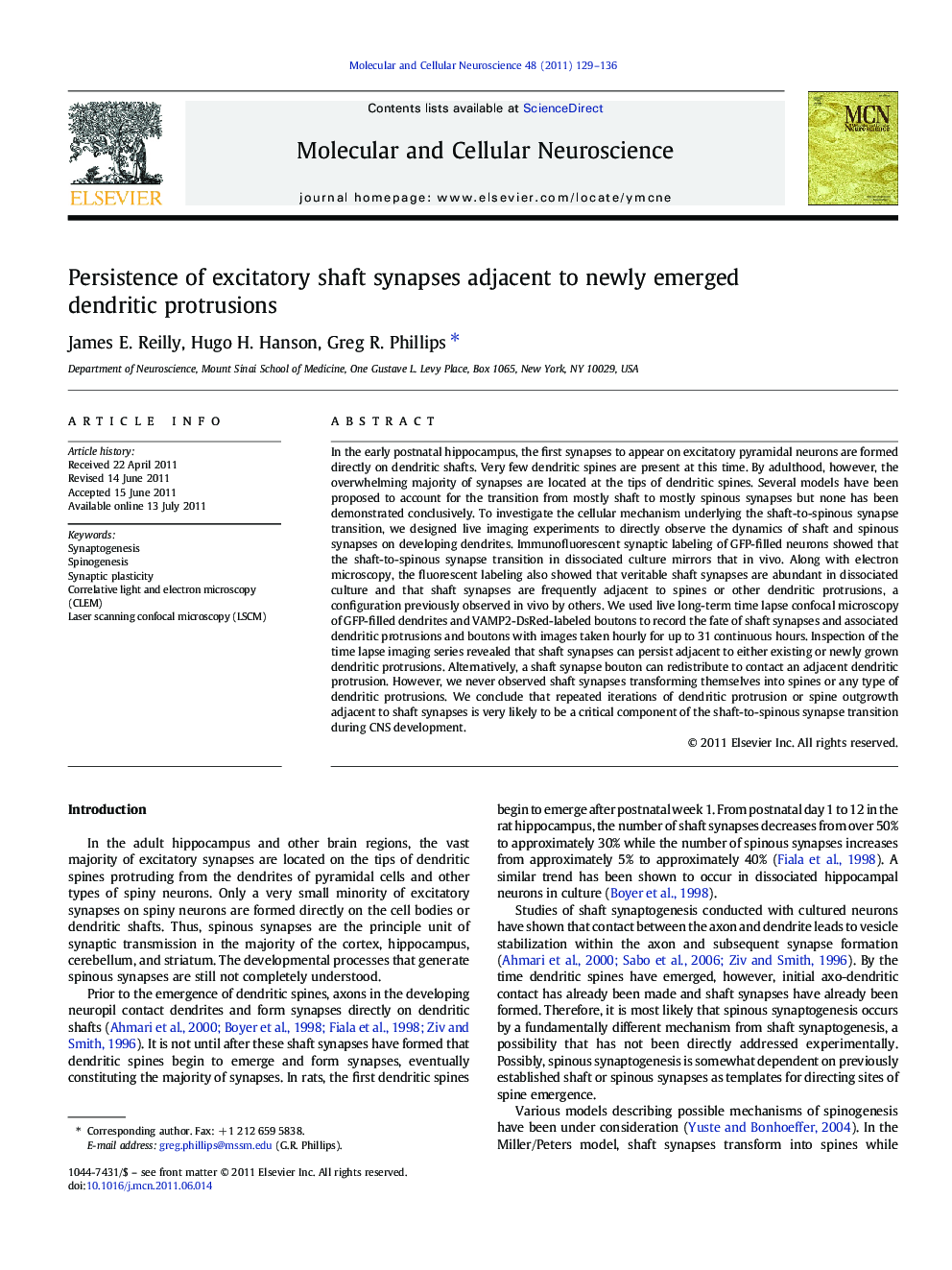| Article ID | Journal | Published Year | Pages | File Type |
|---|---|---|---|---|
| 10956520 | Molecular and Cellular Neuroscience | 2011 | 8 Pages |
Abstract
In the early postnatal hippocampus, the first synapses to appear on excitatory pyramidal neurons are formed directly on dendritic shafts. Very few dendritic spines are present at this time. By adulthood, however, the overwhelming majority of synapses are located at the tips of dendritic spines. Several models have been proposed to account for the transition from mostly shaft to mostly spinous synapses but none has been demonstrated conclusively. To investigate the cellular mechanism underlying the shaft-to-spinous synapse transition, we designed live imaging experiments to directly observe the dynamics of shaft and spinous synapses on developing dendrites. Immunofluorescent synaptic labeling of GFP-filled neurons showed that the shaft-to-spinous synapse transition in dissociated culture mirrors that in vivo. Along with electron microscopy, the fluorescent labeling also showed that veritable shaft synapses are abundant in dissociated culture and that shaft synapses are frequently adjacent to spines or other dendritic protrusions, a configuration previously observed in vivo by others. We used live long-term time lapse confocal microscopy of GFP-filled dendrites and VAMP2-DsRed-labeled boutons to record the fate of shaft synapses and associated dendritic protrusions and boutons with images taken hourly for up to 31 continuous hours. Inspection of the time lapse imaging series revealed that shaft synapses can persist adjacent to either existing or newly grown dendritic protrusions. Alternatively, a shaft synapse bouton can redistribute to contact an adjacent dendritic protrusion. However, we never observed shaft synapses transforming themselves into spines or any type of dendritic protrusions. We conclude that repeated iterations of dendritic protrusion or spine outgrowth adjacent to shaft synapses is very likely to be a critical component of the shaft-to-spinous synapse transition during CNS development.
Keywords
Related Topics
Life Sciences
Biochemistry, Genetics and Molecular Biology
Cell Biology
Authors
James E. Reilly, Hugo H. Hanson, Greg R. Phillips,
